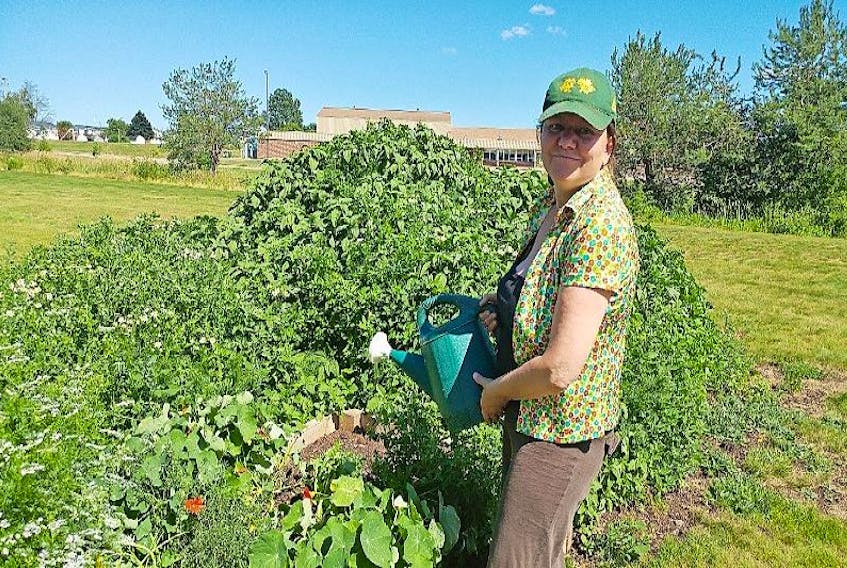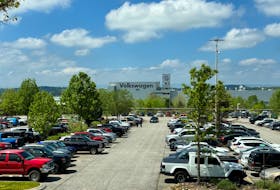Community discussion
In January a group of concerned farmers, politicians, businessmen and locals gathered in Truemanville to discuss how to maximize arable land use for agriculture. The meeting focused on identifying arable land and resources were also provided on provincial programs available for farmers.
Cumberland North MLA Elizabeth Smith-McCrossin, who ran her campaign on sustainable food supply, intends to hold additional public meetings once growing season is over. One thing she wants to see is provincial agriculture representatives working in the county – the nearest representatives are in Truro.
“When looking at ways to grow our economy, this makes sense to use the resources that we have,” said Smith-McCrossin. “Currently we’re not using all of our resources.”
Su Morin, Cumberland Coordinator for Ecology Action Centre, says that other ideas floating around are making a registry of abandoned farms and having communities form a Community Economic and Development Investment Fund from FarmWorks.
Morin also thinks that having a county agriculture co-ordinator to proactively promote farming and provide resources would be another great idea. Agriculture is under community and economic development.
Another group is the Maritime Beef Council, which is actively working toward creating a Maritime Beef School and producing 20,000 beef cattle by 2027, a strategy started in May.
Large-scale farming
Large corporations have started to buy into some farms in Cumberland County. Some see these corporations as an economic benefit to the area while others disagree.
“They’re not really having an economic impact in that community, other than maybe paying some taxes,” said Morin. “They’re not benefiting that community in the same way that tweny or a hundred small scale farm families would.”
Morin would like to see more diversity in local farming. She grew up in southern Ontario, where there are large-scale monoculture operations owned by big corporations.
“I grew up on a tiny little postage stamp of an organic farm, just under 50 acres, surrounded by huge, 100, 500, thousands of acres of soybean farms, where it was just spray, spray all around,” said Morin. “It definitely had an impact on wildlife. I just don’t want to see that happen here.”
Bryan Dyck, president of the Cumberland County Federation of Agriculture, says that older farmers often have few options as to who they would like to see farming their land once they retire.
“As farmers get older and they’re unable to keep up their farms themselves, they’ll look for people to lease to,” said Dyck. “If that person to lease to is either Cavendish or a farmer who wants to cover a lot of acres at once, they might not have the same investment in that land as someone who’s living there and wants to make a long-term livelihood off of that land.”
Retirement issues, difficulty for young farmers
It used to be that farming was passed down through the family. Over the years, young people have started to veer away from farming to seek other professions, leaving older farmers without a successor. Anyone wanting to get into farming without a family background often faces difficulties.
“The biggest challenge with a lot of the older farmers is that they’ve built up all the equity in the farm,” said Brian Trueman. “What they’ve built up they have to pretty much sell to have something to retire on. They have a lot of equipment and the cost is pretty high so it makes it pretty difficult for young people to get into the business.”
According to Trueman, who runs a fifth-generation farming operation of beef cattle and blueberries, mentorship programs in Western Canada have seen much success and are starting to occur in Nova Scotian farms. The opportunity gives young people the chance to work on a farm and gradually buy into the business over years.
“I encourage all young people who look at agriculture,” said Doug Bacon, dairy farmer. “It is a very challenging rewarding lifestyle and it can make a happy family, home. There’s humongous opportunities here. But then again, to look at those opportunities, to move them forward they need direction, help and wisdom.”
Local food movement
“It’s a necessity for us,” said Smith-McCrossin. “We could be leaders in growing our own food supply in the province.”
Only 13 per cent of money spent by consumers on food goes to Nova Scotian farmers. This shows an economy reliant on imports.
Investments in local food by consumers would return wealth to the region. Morin believes that there is a local food movement and that political will is needed to make it happen more easily.
“The public demand is clear. People want access to healthy, local food. People are concerned about our ability to feed ourselves into the future, especially with climate change. From a food security perspective, we are nowhere near being able to feed ourselves if for some crazy reason we weren’t getting imported food at the grocery store anymore.”









